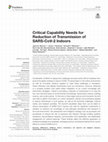Papers by William Bahnfleth

Multizone airflow analysis is an important tool for analyzing the performance of a building from ... more Multizone airflow analysis is an important tool for analyzing the performance of a building from the perspective of ventilation, contaminant transport, and indoor air quality. However, many airflow modeling and simulation applications such as CONTAM do not allow for easy input of previously developed model contents, which hinders their effectiveness. Consequently, in the current practice engineers commonly need to rebuild a multizone model of the target building, although the majority of the required information has been already produced and available. This is time consuming and may result in differences between the original model and the analysis model. In order to successfully implement the integrated building design process using a Building Information Model (BIM) to address the deficiencies, this paper presents processes to illustrate detailed workflows along with key decision making points, and exchange requirements identified within the processes. This efforts facilitates the implementation of BIM into an integrated building design process by contributing to the automation of information extraction from the BIM model and generation of its airflow analysis model.
Clinical Infectious Diseases
This is an account that should be heard of an important struggle: the struggle of a large group o... more This is an account that should be heard of an important struggle: the struggle of a large group of experts who came together at the beginning of the COVID-19 pandemic to warn the world about the risk of airborne transmission and the consequences of ignoring it. We alerted the World Health Organization about the potential significance of the airborne transmission of SARS-CoV-2 and the urgent need to control it, but our concerns were dismissed. Here we describe how this happened and the consequences. We hope that by reporting this story we can raise awareness of the importance of interdisciplinary collaboration and the need to be open to new evidence, and to prevent it from happening again. Acknowledgement of an issue, and the emergence of new evidence related to it, is the first necessary step towards finding effective mitigation solutions.
ISEE Conference Abstracts

Journal of Research of the National Institute of Standards and Technology, Mar 1, 2022
A method is described for inactivation of pathogens, especially airborne pathogens, using ultravi... more A method is described for inactivation of pathogens, especially airborne pathogens, using ultraviolet (UV) radiation emitted directly into occupied spaces and exposing occupants to a dose below the accepted actinic exposure limit (EL). This method is referred to as direct irradiation below exposure limits, or DIBEL. It is demonstrated herein that low-intensity UV radiation below exposure limits can achieve high levels of equivalent air changes per hour (ACH eq) and can be an effective component of efforts to combat airborne pathogens such as the severe acute respiratory syndrome coronavirus 2 (SARS-CoV-2), the virus that causes coronavirus disease 2019 (COVID-19). An ACH eq of 4 h −1 is presently achievable over a continuous 8 h period for the SARS-CoV-2 virus with UV-C light-emitting diodes (LEDs) having peak wavelength at 275 nm, and future improvements in LED technology and optics are anticipated to enable improvements up to 150 h −1 in the coming decade. For example, the actinic EL is 60 J/m 2 at 254 nm, and human coronaviruses, including SARS-CoV-2, have a UV dose required for 90 % inactivation of about 5 J/m 2 at 254 nm. Irradiation by 254 nm UV-C at the EL is expected to provide 90 % inactivation of these organisms in air in about 40 min when the UV-C is delivered at a constant irradiance over 8 h, or in about 5 min if the UV-C is delivered at a constant irradiance over 1 h. Since the irradiation is continuous, the inactivation of initial contaminants accumulates to 99 % and then 99.9 %, and it also immediately begins inactivating any newly introduced (e.g., exhaled) pathogens at the same rate throughout the 8 h period. The efficacy for inactivating airborne pathogens with DIBEL may be expressed in terms of ACH eq , which may be compared with conventional ventilation-based methods for air disinfection. DIBEL may be applied in addition to other disinfection methods, such as upper room UV germicidal irradiation, and mechanical ventilation and filtration. The ACH eq of the separate methods is additive, providing enhanced cumulative disinfection rates. Conventional air disinfection technologies have typical ACH eq values of about 1 h −1 to 5 h −1 and maximum practical values of about 20 h −1. UV-C DIBEL currently provides ACH eq values that are typically about 1 h −1 to 10 h −1 , thus either complementing, or potentially substituting for, conventional technologies. UV-C DIBEL protocols are forecast herein to evolve to >100 ACH eq in a few years, potentially surpassing conventional technologies. UV-A (315 nm to 400 nm) and/or UV-C (100 nm to 280 nm) DIBEL is also efficacious at inactivating pathogens on surfaces. The relatively simple installation, low acquisition and operating costs, and unobtrusive aesthetic of DIBEL using UV LEDs contribute value in a layered, multi-agent disinfection strategy.
Journal of Building Engineering

Science and Technology for the Built Environment, 2016
Biological fouling (biofouling) on cooling coil surfaces acts as thermal insulation, impeding hea... more Biological fouling (biofouling) on cooling coil surfaces acts as thermal insulation, impeding heat transfer from air to coil surfaces, decreasing airside heat transfer coefficient and degrading coil cooling capacity. It is also a common cause of low T syndrome in chilled water distribution systems. The effects of a commercially available ultraviolet germicidal irradiation system installed in a variable air volume system on the airside heat transfer coefficient, cooling coil capacity, and its potential to mitigate low T syndrome were investigated via a field test. Energy-related measurements including chilled water supply/return temperature, water-/airflow rate and entering/leaving air temperature/relative humidity commenced 4 months before turning on ultraviolet lamps and continued for 10 months after ultraviolet germicidal irradiation intervention. The effects of the ultraviolet germicidal irradiation system were evaluated via a "before ultraviolet" and "after ultraviolet" comparison. After ultraviolet intervention, within the face velocity range of 1.5-3.0 m/s, the airside heat transfer coefficient increased by 11.8%-20.1%, which translated into 8.8%-10.2% increase in the overall enthalpy-based thermal conductance. The coil total cooling capacity and latent cooling capacity increased by 3.3%-3.8% and 4.5%-5.7%, respectively. The chilled water flow rate required to maintain the leaving air temperature set-point decreased by 8.0%-11.9% and the water-side temperature difference increased by 0.4 • C-0.6 • C.
Environmental Science & Technology, 2022

Once an aerosol contaminant is introduced into an indoor environment, it can remain in the air, d... more Once an aerosol contaminant is introduced into an indoor environment, it can remain in the air, deposit on interior surfaces or attach to dust particles already present. Human activity, such as walking and cleaning, resuspends contaminated particles, regenerating airborne contaminants. This report is a literature review on the effects of human activity on particle re-suspension in indoor environment. A parametric investigation is also made on particle resuspension effects of potential mechanical, aerodynamic and electrostatic force components, due to human activity over the particle-containing reservoir. It is shown that combinations of mechanical-aero-electro forces from human activity, can lead to significant particle resuspension in indoor environment. Additional experimental and modeling work is recommended to quantify the influence of human activity on indoor particle resuspension. INDEX TERMS Resuspension, human activity, mechanical vibration, boundary drag force, electrostati...
Air cleaner effectiveness (ε) is the fractional change in concentration of an air contaminant res... more Air cleaner effectiveness (ε) is the fractional change in concentration of an air contaminant resulting from the addition of an air cleaner to a system. Unlike component single-pass efficiency, it takes into account the aggregate effect of all contaminant removal mechanisms as well as the effects of air cleaner placement in the system. The usefulness of ε in the analysis and application of air cleaners, as well as its shortcomings, is illustrated by the modeling of in-duct ultraviolet germicidal irradiation (UVGI) in a hypothetical two-zone building served by a constant volume system. The impact of design parameters such as the location of UVGI units, particulate filter efficiency, and the nature of contaminant release are investigated, with calculated ε values ranging from 5% to 90% depending on the nature of these parameters.

Science and Technology for the Built Environment, 2017
Ultraviolet germicidal irradiation of cooling coils controls biofouling that increases airflow re... more Ultraviolet germicidal irradiation of cooling coils controls biofouling that increases airflow resistance and decreases heat transfer coefficient. Though lower in power than air disinfection systems, coil ultraviolet germicidal irradiation systems should provide some collateral air treatment benefit. This benefit is estimated through monetization of simulated nonfatal illness spread in a group of commercial buildings. Benefits were quantified using appropriate metrics for each building type: work-loss days for office buildings, hospital acquired infections for healthcare facilities, and disability adjusted life years for schools. The pre-ultraviolet germicidal irradiation annual cost of occupant illness was the same order of magnitude as annual energy cost. Area-normalized cost was similar in magnitude for all buildings. The collateral air disinfection of coil surface ultraviolet germicidal irradiation reduced baseline illness costs by 3.5% or less, but the resulting cost savings exceeded the energy cost to operate the coil ultraviolet germicidal irradiation systems by as much as a factor of 20. The effectiveness of air cleaning methods already in place, such as ventilation and filtration, directly influences the incremental benefit of additional air cleaning measures.

Some infectious diseases, including COVID-19, can be transmitted via aerosols that are emitted by... more Some infectious diseases, including COVID-19, can be transmitted via aerosols that are emitted by an infectious person and inhaled by susceptible individuals. Most airborne transmission occurs at close proximity and is effectively reduced by physical distancing, but as time indoors increases, infections occur in those sharing room air despite maintaining distancing. There have been calls for quantified models to estimate the absolute and relative contribution of these different factors to infection risk. We propose two indicators of infection risk for this situation, i.e., relative risk parameter (Hr) and risk parameter (H). They combine the key factors that control airborne disease transmission indoors: virus-containing aerosol generation rate, breathing flow rate, masking and its quality, ventilation and particulate air cleaning rates, number of occupants, and duration of exposure. COVID-19 outbreaks show a clear trend in relation to these factors that is consistent with airborne ...

Frontiers in Bioengineering and Biotechnology, 2021
Coordination of efforts to assess the challenges and pain points felt by industries from around t... more Coordination of efforts to assess the challenges and pain points felt by industries from around the globe working to reduce COVID-19 transmission in the indoor environment as well as innovative solutions applied to meet these challenges is mandatory. Indoor infectious viral disease transmission (such as coronavirus, norovirus, influenza) is a complex problem that needs better integration of our current knowledge and intervention strategies. Critical to providing a reduction in transmission is to map the four core technical areas of environmental microbiology, transmission science, building science, and social science. To that end a three-stage science and innovation Summit was held to gather information on current standards, policies and procedures applied to reduce transmission in built spaces, as well as the technical challenges, science needs, and research priorities. The Summit elucidated steps than can be taken to reduce transmission of SARS-CoV-2 indoors and calls for signific...

SSRN Electronic Journal, 2021
The question of whether SARS-CoV-2 is transmitted by droplets or aerosols has been very controver... more The question of whether SARS-CoV-2 is transmitted by droplets or aerosols has been very controversial. We sought to explain this controversy through a historical analysis of transmission research in other diseases. For most of human history, many diseases were thought to transmit through the air, often over long distances and in a phantasmagorical way, and often in error (e.g. malaria, cholera). Building on the germ theory of disease developed in the mid 19th century and on the demise of miasma theory, prominent public health official Charles Chapin in 1910 urged the public health community to focus on contact and droplet infection. However, he introduced a major error in the process: that ease of infection in close proximity is associated exclusively with large “sprayborne” droplets that fall to the ground quickly, and he deemed airborne transmission as very unlikely. This new paradigm became dominant, leading to systematic errors in the interpretation of research evidence on transmission. For the next five decades, no disease was accepted by the general medical and infection control communities as airborne, until tuberculosis (which had been misclassified as droplet) in 1962. Chapin’s paradigm remained dominant and only a few diseases were widely accepted as transmitted by aerosols before COVID-19: those that were clearly transmitted over long distances or time scales. Resistance to the idea of airborne spread of a respiratory infection is not new. In fact, it has occurred repeatedly over much of the last century and greatly hampered understanding of how diseases transmit.
Environment International, 2020
Science, 2021
Children and adults around the world suffer multiple airborne respiratory infections each year. I... more Children and adults around the world suffer multiple airborne respiratory infections each year. Infections cause suffering, deaths, massive economic loss and disrupt the functioning of the society. Despite this, for numerous reasons, respiratory infections are considered an inescapable part of daily life. Very little has been done to limit their impact, and their prevention still awaits a systematic approach. However, we argue that it does not have to be this way. We need a profound change in how we view this risk and how we apply scientific knowledge, building engineering solutions and public health policies to reduce it. This change will lead to clean air with a significantly reduced pathogen count, which will improve people's health, together with societal economic benefits. While the scale of the changes required is

Energy and Buildings, 2018
Occupant behaviour has been shown to be one of the key driving factors of uncertainty in predicti... more Occupant behaviour has been shown to be one of the key driving factors of uncertainty in prediction of energy consumption in buildings. Building occupants affect building energy use directly and indirectly by interacting with building energy systems such as adjusting temperature set-points, switching lights on/off, using electrical devices and opening/closing windows. Furthermore, building inhabitants' daily activity profiles clearly shape the timing of energy demand in households. Modelling energy-related human activities throughout the day, therefore, is crucial to defining more realistic occupant profiles for prediction of energy use to reduce the gap between predicted and real building energy consumptions. To generate accurate occupant profiles for the residential sector in Denmark, the Danish time use surveys are considered an essential data source. The latest Danish diarybased time use survey was conducted in 2008/09 among 17,707 individuals from 4,679 households. Individuals' daily activities were logged in 10-minute time increments throughout 24 h, starting and ending at 4am, during both weekdays and weekends. The dataset was clustered in 10 activities that were considered suitable for modelling occupancy profiles and behavioural patterns related to energy use. The latter were analysed for different categories such as variation during different days of the week and seasons of the year.










Uploads
Papers by William Bahnfleth